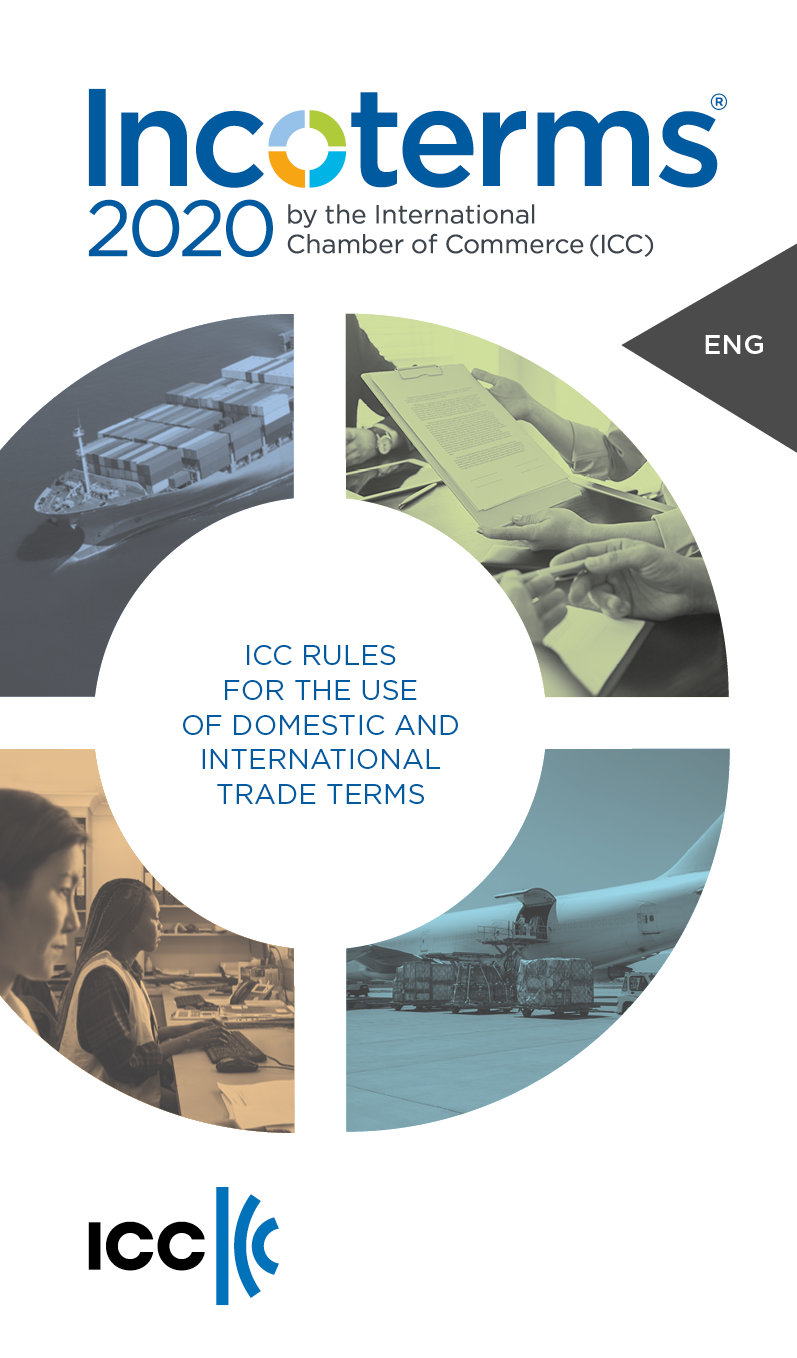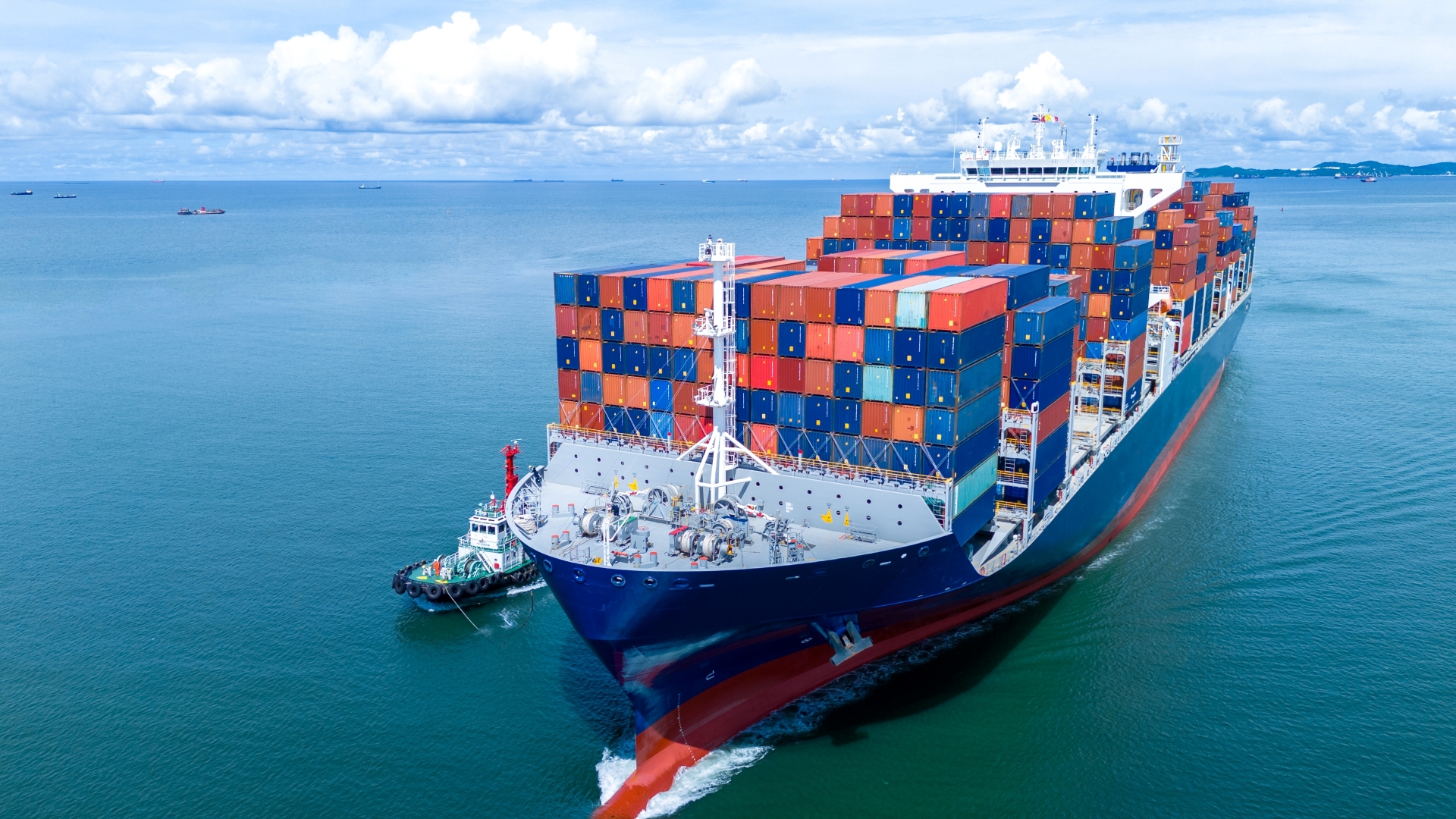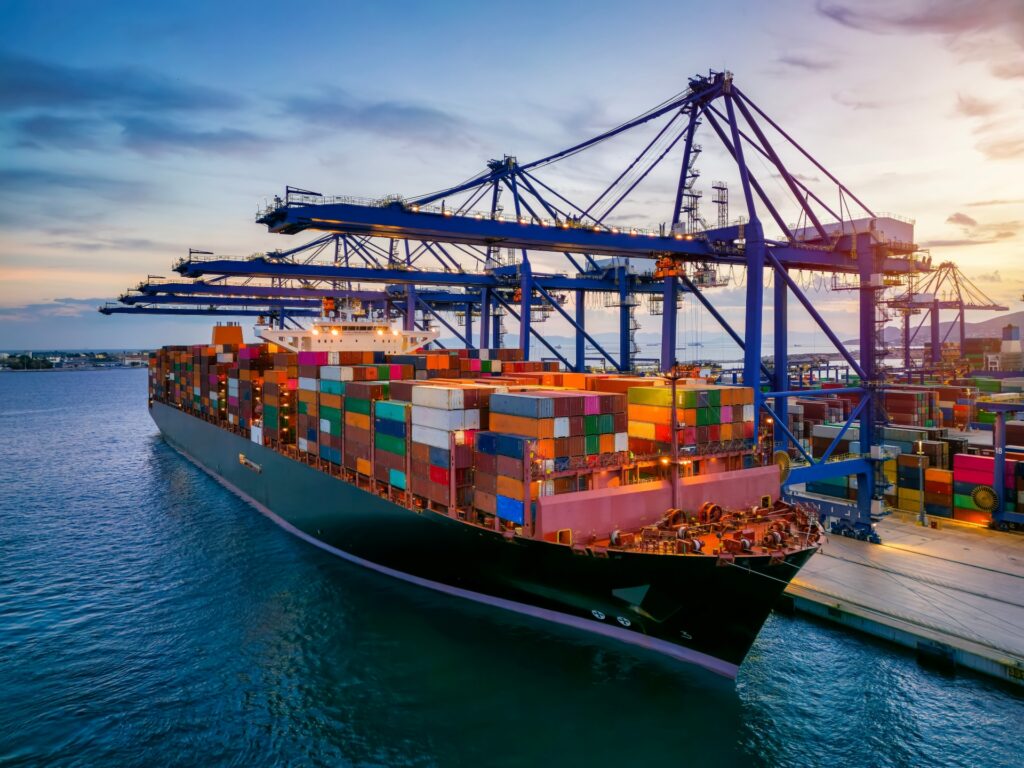In this article, Miguel Angel Bustamante Morales discusses the key differences between the Incoterms® rules, EXW and DDP.
Miguel is an ICC certified trainer on the Incoterms® 2020 Rules and an active participant in the last three revisions of the Incoterms® Rules: 2000, 2010, and 2020.
The views and opinions expressed in this article are those of our authors and do not necessarily reflect the official policy or position of the ICC Academy or ICC.
The Incoterms® rules, established by the International Chamber of Commerce (ICC) in 1936, are a set of standardised trade rules. Periodically reviewed and updated, the latest version is Incoterms® 2020.
These rules provide clear, standardised terms for sellers and buyers (or exporters and importers), defining key aspects of a sales contract, including the place of delivery and the transfer of risk for loss or damage from seller to buyer.
Each of the eleven rules provide clarity on:
- The place of delivery and point at which risk for loss or damage transfers from seller to buyer.
- The costs each party must bear
- Which party is responsible for arranging transportation, including meeting security requirements
- Who must secure insurance coverage for the goods (in the rules CIP and CIF)
- Responsibility for export and import formalities
- Obligations related to packaging, marking and checking, such as for quality or weight
The Incoterms® rules are represented with three-letter abbreviations, such as EXW, FCA, CIF or DAP. In this article we will focus on EXW and DDP – exploring when to use each and their key differences.

Incoterms® 2020 Certificate
EXW or DDP
Deciding between EXW and DDP in a trade transaction depends on several factors, and users should note that each of these rules may cause complications for seller or buyer. In fact, traders should consider using FCA instead of EXW [1] where possible, and DAP instead of DDP [2], where possible. Let’s start with their key differences:
Note [1]: With EXW delivery happening when the goods are at the buyer’s disposal typically within the seller’s jurisdiction or within the same customs union, there is no obligation on the seller to organise export clearance or clearance within third countries through which the goods pass in transit. The seller’s participation is limited to providing assistance in obtaining such documents and information as the buyer may require for the purpose of exporting the goods and thus where buyer plans to export the goods and anticipates difficulty in obtaining export clearance, the buyer would be better advised to choose the Incoterms® 2020 FCA rule, under which the obligation and cost of obtaining export clearance lies with the seller.
Note [2]: Under DDP, the seller is responsible for import clearance in the destination country, which can pose problems for the seller: In some countries, foreign entities are prohibited from carrying out import customs and tax formalities altogether. Even where it is allowed, complying with legal and administrative requirements in the buyer’s country can be difficult and costly, representing a special burden for small- and medium-sized sellers. In such cases, a seller would be better advised to consider selling goods under the Incoterms® 2020 DAP rule, where the obligation and cost of obtaining import clearance lies with the buyer.
- EXW represents minimal responsibility on the seller and maximum on the buyer. The seller delivers the goods and transfers risks typically at their own premises (e.g. factory or warehouse). From that point on, the buyer assumes all costs and risks.
- DDP, on the other hand, imposes maximum responsibility on the seller and minimal on the buyer. The seller is responsible for delivering the goods and transferring risk at the agreed destination, which could be the buyer’s premises – essentially a door-to-door delivery, or “all inclusive” delivery [3].
Note [3]: Under DDP (Incoterms® 2020, Article A2), the buyer is responsible for unloading the goods from the final mode of transport. If unloading costs are not included in the seller’s transport contract, the buyer must cover them (Article B9).
- EXW does not require the seller to clear goods for export or to contract transportation. The buyer must handle export and import clearance, if any, and organise transport from the seller’s premises to the destination.
- DDP, on the other hand, obligates the seller to manage both export and import formalities (including any transit customs) and arrange transportation to fulfil delivery at the agreed destination.
- Under EXW, pricing includes only the goods’ value and necessary packaging for the entire transport journey based on the chosen transport mode(s).
- In contrast, DDP pricing covers packaging, loading, transport to the agreed destination, and export/import clearance. Unloading costs from the final transport mode may or may not be included, so parties should clarify this in the sales contract [4].
- EXW requires the seller to assist the buyer with transport-related security requirements, but only upon request and at the buyer’s risk and cost.
- DDP, however. requires the seller to handle all transport-related security requirements at their own risk and cost.
- EXW is suitable for domestic trade, as the seller delivers typically at their premises without handling customs formalities – though this is a recommendation, not a rule. If goods are sold under EXW for export, both seller and buyer may face accounting or tax complications.
- DDP envisions international trade, as the seller must complete export/import formalities and deliver the goods, assuming the risk for loss or damage until the agreed destination. A seller may face significant barriers to completing import formalities in a foreign destination country and may thus be better off selling under DAP instead.
- Despite their differences, EXW and DDP share one key feature: both can be used with any mode of transport or a combination of multiple transport modes.
Note [4]: Under DDP (Incoterms® 2020, Article A2), the buyer is responsible for unloading the goods from the final transport mode. If unloading costs are not included in the seller’s transport contract, the buyer must cover them (Article B9).
So, when is it right to use EXW or DDP, given that they have no common features?
To better understand this, we will explain both Incoterms® rules in more depth below.
However, we encourage you to also explore other key insights related to the “E” and “D” terms in the Incoterms® rules. Keep in mind that EXW and DDP are at the opposite ends of the spectrum – one placing minimal responsibility on the seller (EXW) and the other placing maximum responsibility on the seller (DDP).
Read the article: Incoterms® 2020 vs 2010: What’s changed?
Understanding EXW (Ex Works)
EXW means that the seller delivers the goods at the agreed location – typically the seller’s premises – by making them available to the buyer. Delivery must occur on the agreed date or within the timeframe specified in the sales contract.
The phrase “placing the goods at the disposal of the buyer” means the goods must be ready for loading onto the collecting vehicle arranged by the buyer. Loading is the buyer’s responsibility, risk, and cost.
The seller’s premises refer to the warehouse, factory or any other facility where the goods are made available to the buyer.
At this location, the seller transfers the risk of loss or damage to the buyer. Therefore, it is crucial to clearly define the exact place and point of delivery in the sales contract.
What does this mean? Instead of simply stating “EXW Prato Italy”, it is much better to specify: “EXW Via G. Pieraccioli, 41 Prato Italy, Incoterms® 2020”
This level of detail ensures clarity on where the seller must place the goods at the buyer’s disposal.
Both parties must fully understand EXW’s terms to avoid disputes over delivery location precision or the responsibility for loading the goods onto the buyer’s vehicle.
What should parties understand when choosing EXW?
Since the seller delivers and transfers risks at their premises by making the goods available to the buyer, all subsequent responsibilities fall entirely on the buyer. These include:
- Loading and unloading operations for all transport modes used
- Arranging and paying for transportation throughout the entire journey
- Handling export, import, and any transit customs formalities
- Deciding whether to insure the goods, as coverage is at the buyer’s discretion once delivery occurs.
Is EXW more suitable for domestic or international trade?
EXW is often most practical for domestic trade since it minimises the seller’s obligations. However, many exporters still choose EXW for international transactions to avoid customs procedures, transportation arrangements, and risks beyond their borders.
Similarly, importers may prefer EXW as it gives them full control over logistics, costs, and risks from the moment they take delivery at the seller’s premises.
Ultimately, the choice of EXW should be based on a clear understanding of its terms and the possible implications, rather than assumptions or preferences.
Basic obligations of the buyer and seller under EXW
- The seller must deliver the goods at the agreed location, typically at their premises, and the buyer must accept delivery at that place.
- Delivery must take place on the agreed date or within the timeframe specified in the sales contract.
- The seller must ensure that the goods are properly marked, ready, and available for the buyer to take delivery.
- The buyer is responsible for loading the goods onto the arranged vehicle, assuming all risks and costs.
- At the buyer’s request, risk, and cost, the seller must assist in obtaining any transport-security documents or requirements.
- The buyer must handle all export formalities and arrange transportation for the entire transportation journey.
- Though EXW contains no obligations regarding contracting for insurance, the buyer may arrange any insurance from the moment delivery occurs and risk transfers.
- If the buyer is unable to complete export formalities in the seller’s country, they should consider using FCA instead. Under FCA, the seller handles export clearance while maintaining the possibility of delivery occurring at their premises. Note also that under FCA, if the delivery happens at seller’s location, the seller is required to load the goods onto the buyer’s collecting vehicle.
- The buyer must complete any import formalities and any necessary transit customs clearances.
When do you use EXW?
EXW is used when:
- When seller is unwilling to handle any loading/unloading, customs formalities, or transportation.
- When the seller only commits to delivering at their premises without moving the goods elsewhere.
- When the buyer is willing to take delivery at seller’s facilities and assume all risks, costs, and logistics from that point onward.
EXW is often recommended for domestic trade where both parties are in the same country. This eliminates customs procedures and allows the buyer to use their own truck, avoiding the need for a contracted carrier. However, this is a recommendation, not a requirement.
Read: ‘Incoterms® 2020: EXW or FCA?‘
Understanding DDP (Delivered Duty Paid)
DDP is the opposite of EXW in terms of responsibilities, risks, and costs.
To fully understand DDP, firstly, the seller must be aware that they are responsible for delivering the goods to the named place and point of destination.
Under DDP, risk transfers from seller to buyer only when the goods reach the agreed destination – typically in the buyer’s country, such as at the buyer’s premises. This makes DDP a “door-to-door” delivery, where all the risks and costs are covered by the seller – except for unloading at the destination.
What do I mean by “the specific place and point of destination”?
In practice, parties often state something vague like “DDP Milford CT, USA.”, This is not recommended because it creates uncertainty and increases the risk of disputes. Milford, CT is a general location, not a precise delivery point. The issue with this vague description is that it allows the seller to choose the delivery point within Milford, CT that best suits them (as stated in article A4 of DDP, Incoterms® 2020).
To avoid misunderstandings, the delivery location should be explicitly defined. For example: “DDP, 203 Broad Street, Milford, CT 06460, USA, Incoterms 2020”. With this precise address, it is clear where delivery – and the transfer of risk – will take place, preventing potential disputes.
What should parties understand when choosing DDP?
Parties must clearly understand that the seller delivers and transfers risks to the buyer at the named place and point of destination. If the delivery is at the buyer’s address (e.g.: 203 Broad Street, Milford, CT 06460, USA), then all responsibilities fall on the seller, including:
- Loading the goods onto the transport vehicle
- Managing all export and import customs (the import part of which may raise complications), including any transit customs procedures.
- Arranging and paying for transportation to the named destination
Who pays for unloading?
- If unloading costs are included in the transport contract, the buyer does not need to pay for them.
- If unloading costs are not included, the buyer must pay them.
- Regardless of the transport contract, the risk of unloading always falls on the buyer.
Insurance considerations under DDP
There is no need to discuss who insures the goods – whether by the seller or buyer – because the seller is fully responsible for delivering the goods in sound condition, as per the sales contract. It is entirely the seller’s decision whether to insure the goods for protection during transit until delivery at the named destination.
Import formalities under DDP
The seller must handle import formalities – this is mandatory. However, if:
- The seller is unable to manage import clearance or
- The importing country’s regulations prevent the seller from completing import formalities,
then DAP is a better alternative.
Why choose DAP instead?
- Under DAP, the buyer is responsible for import formalities, while delivery can still occur at the agreed location – such as the buyer’s premises (e.g., 203 Broad Street, Milford, CT 06460, USA)
- This allows the seller to avoid import clearance complexities without changing the final delivery location.
Basic obligations of the buyer and seller under DDP
- The seller must deliver the goods at the agreed place and point of destination, which may be the buyer’s premises, where the buyer must take delivery.
- Delivery must occur on the agreed date or within the timeframe specified in the sales contract.
- The seller is responsible for arranging and paying for transportation for the entire journey.
- The seller must place the goods at the buyer’s disposal on the arriving vehicle, ready for unloading. The buyer assumes the risk of unloading.
- The transport contract may include unloading costs, but regardless of payment, the risk of remains with the buyer.
- The seller must obtain and cover the cost of any transport-security documents or requirements.
- The seller must handle both export and import formalities at their own cost and risk, including any necessary transit customs procedures.
- If the seller unable to complete import formalities in the buyer’s country, they should consider using DAP instead, as mentioned above.
- Since the seller assumes all risks until delivery, they are not required to insure the goods for the buyer. However, the seller may choose to insure the goods for their own protection.
- The buyer must assume the risk and cost of unloading the goods from the arriving vehicle at the agreed destination. (See exception in point 5 regarding unloading costs in the transport contract).
When do you use DDP?
DDP is used:
- When the seller is prepared to deliver the goods to the agreed destination, typically close to the buyer, or even at their warehouse (door-to-door), within the agreed timeframe.
- When the seller is willing to cover all risks and costs up to the agreed destination, except for unloading from the final transport vehicle.
- When the seller is responsible for arranging and paying for transportation to the specified place and point of delivery.
- When the seller is prepared to handle all customs formalities, including export, import and any transit customs. Note there may be significant difficulties facing a seller aiming to import into a foreign country.
- When the buyer is willing to assume the risk of unloading the goods up from the final transport mode at the named place of destination.
- When the buyer is prepared to cover unloading costs if they were not included in the seller’s transport contract. To avoid disputes, both parties should clearly define this cost in the sales contract.
Read: ‘Incoterms® 2020: DAP or DDP?‘
Comparative analysis of EXW and DDP
EXW: Minimum obligation for the seller, maximum for the buyer
- EXW places minimal responsibility on the seller. The seller delivers and transfers risk to the buyer typically at their own premises (e.g. warehouse or factory).
- EXW places maximum responsibility on the buyer. The buyer assumes all costs and risks from the seller’s location onward.
- Pricing under EXW: The commercial invoice only includes the goods’ value and packaging costs. The buyer must cover:
- Loading and unloading
- Transportation
- Transport-related security requirements
- Export, import, and transit customs, if any
- Insurance (optional, at the buyer’s risk and cost)
DDP: Maximum obligation for the seller, minimum for the buyer
- DDP places maximum responsibility on the seller. The seller delivers and transfers risk to the buyer at the agreed destination – often the buyer’s premises, making it a door-to-door delivery.
- DDP places minimal responsibility on the buyer. The buyer only assumes risk once the goods arrive in sound condition at the named destination.
- Pricing under DDP: The commercial invoice includes goods’ value plus the following costs:
- Packaging of the goods
- Loading and unloading* operations
- Transportation up to destination
- Transport-related security requirements
- Export, import, and transit customs
- Risks of loss or damage to the goods (which may require the seller to purchase insurance and include it in the sale price)
*Except unloading the goods from the last vehicle utilised to transport the goods up to the agreed place of destination, unless the cost is already included in the transport contract.
Read: ‘ National regulatory barriers to the Incoterms® 2020 rules (Updated in January 2025)‘
Use cases for EXW and DDP
For EXW:
EXW is often recommended for domestic transactions, while FCA is typically more suitable for international trade. The following case illustrates the use of EXW between two companies based in the same country.
One of the largest olive oil producers in Spain, located at Carretera de La Carolina, km 29, 23220, Vilches, Jaén entered into an EXW sales contract with a buyer in Madrid for a one year term. The parties agreed that the seller would make 12 monthly deliveries of olive oil during the last week of each month, starting in April 2025 and ending in April 2026.
The agreed place and point of delivery was clearly stated in contract as: “Olive oil, EXW Carretera de La Carolina, km 29, 23220 Vilches, Jaén, Spain, Incoterms® 2020.”
Other terms and conditions stated in the sales contract:
- The olive oil is to be packaged in 500ml dark green glass bottles.
- Payment method: Open account, 30 days after each delivery.
- Payment by bank transfer to seller’s account No. 12345678, held with bank XYZ, Jaen, Spain.
Execution of the contract
- The seller produced and prepared the goods, making the first monthly delivery available at the agreed location in the last week of April 2025.
- The buyer is responsible for taking delivery at the designated location within the agreed timeframe.
- The buyer also assumes the risk of loading the goods onto their own vehicle at the point of delivery.
- This delivery process is to repeat monthly until the final delivery in April 2026.
- The buyer chose to use their own transportation, specifically trucks suitable for transporting olive oil.
Risk transfer and payment process
- Risk transfers to the buyer once the goods are placed at their disposal at the seller’s premises, starting with the first delivery in April 2025.
- The buyer collected the goods on time in April 2025.
- The first payment is due by the last week of May 2025, via bank transfer as agreed.
- This monthly cycle of risk transfer and payment continues through to April 2026, with the final payment due in May 2026.
Final notes
- The buyer assumes all risks for loss or damage to the goods once they are delivered at Carretera de La Carolina, km 29, 23220 Vilches, Jaén, Spain.
- While EXW does not require either party to contract insurance, it is strongly advised that the buyer insures the goods to protect against loss or damage from the point of delivery in Jaén to the final destination in Madrid.
Now, let’s see a case with DDP:
A Canadian cement exporter and a U.S. importer signed a DDP sales contract on November 30, 2024, specifying:
“DDP, 203 Broad Street, Milford, CT 06460, USA, Incoterms 2020”.
- Goods: 100,000 tons of white cement
- Latest delivery date: 1 March 2025
- Payment method: Confirmed documentary letter of credit (LC), issued by the buyer’s bank in New York and confirmed by ABC bank, Toronto.
- Required documents for payment:
- Commercial invoice (2 copies)
- Rail transport document (2 copies), consigned to the buyer, indicating shipment from Mississauga, Ontario to Milford, CT
- Packing list (1 copy)
- Certificate of origin (1 copy), issued by the Canadian Chamber of Commerce and visaed by the U.S. Consulate in Toronto
- Certificate of weight (1 copy) issued by SGS Canada
- Latest shipment date: 10 February 2025
- Partial shipments are not permitted
Execution of contract
- On December 10, 2024, the buyer applied for the LC, which was issued on December 10, 2024.
- The seller received the confirmed credit on December 27, 2024, and began preparing the goods.
- The seller contracted CP Rail for transportation and shipped the cement on February 5, 2025, loading it onto multiple hopper cars bound for 203 Broad Street, Milford, CT 06460, USA.
- As DDP requires the seller to handle export and import formalities, the seller completed these procedures without issues.
- The train arrived at the named destination on February 12, 2025, and the seller informed the buyer, enabling them to take delivery.
Since the original documents were needed for U.S. import clearance, the seller used them for customs procedures and delivered them directly to the buyer upon arrival of the goods.
Documentary credit process and payment
- February 15, 2025: The seller gathered all the required documents and submitted them to the ABC Bank (confirming bank) in Toronto.
- February 20, 2025: ABC Bank examined and found them compliant.
- February 23, 2025: ABC Bank honoured the payment, deducting fees.
- February 22. 2025: The confirming bank sent the documents to the issuing bank (by courier) and issued a SWIFT claim for reimbursement.
- February 25, 2025: The issuing bank honoured the confirming bank’s reimbursement claim.
- February 26, 2025: The issuing bank examined and found the documents compliant.
- February 28, 2025: The issuing bank informed the buyer, who paid and collected the shipping documents.
Outcome
- Shipment and delivery were completed on time.
- The letter of credit was honoured successfully.
- The buyer received the documents, cleared customs, and took possession of the cement.

Incoterms® 2020 English
Choosing the right Incoterms® rule
There is no “right or wrong” Incoterms® rule’, but only the most appropriate one for a given transaction.
Whether using EXW or DDP, sellers and buyers should carefully review and analyse the information provided in this guide. Additionally, gaining insights from ICC Academy certifications and courses based on the Incoterms® 2020, publication 723 will help them make well-informed decisions.





